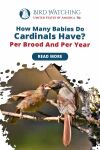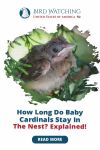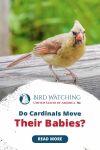![What Do Baby Pigeons Look Like? Where Are They? [15 Pictures] Thumbnail](/assets/resized/img/posts/baby-pigeon-100x150.jpg)
What’s This Post About?
The universally found bird in the cities and towns of almost every country, the pigeons accompany humans with their presence in nearly all outdoor settings.
Dwelling close to where humans reside, scuttling rapidly and resting in your window sill with their mates, the pigeons end up spreading their excrement in almost every corner, sometimes making you disguise them for the filth they create.
Do you ever wonder that these black, grey, and brown feathered birds that we see almost every day are only grown-up species? How come you never see their nests and their offspring?
Just like the adult pigeons are so prevalent around, their babies seem to be an utter rarity. This leads us to contemplate what do baby pigeons look like and where do they live.
Baby pigeons, known as squabs, are incredibly tiny in size when they hatch out of their eggs, almost naked, having scattered feathers. After fledging for a period of 6 weeks, they leave their nests and fly around. Located in the most concealed and hidden spots, the pigeons keep their young ones protected.

All About Baby Pigeons
Many avid birders often want to catch a glimpse of baby pigeons. However, most have a bit of hard luck finding one in a flock with many gregarious species perching around.
Keep reading this post to learn everything about the baby pigeons. You’ll be amazed to learn about some of the baby pigeons’ amazing life cycle facts and their nesting sites.

How Long Does It Take For The Pigeon Eggs To Hatch?
The life of a pigeon begins in an egg. After the female pigeon lays the eggs, usually in a clutch of 2-3, it typically takes around 18 days for the egg to hatch.
You might be amazed to know that hatching and emerging out of the egg is quite a laborious procedure for the bird. Hence, right after birth, the baby pigeon needs to rest for about 12 hours before it could be fed anything.
Both the parent pigeons take the responsibility of fending their little ones, who are highly dependent on them until they are old enough to live independently. These baby pigeons are referred to as squabs.

What Do Baby Pigeons Look Like?
Looking at baby pigeons isn’t too relishing a sight. Hatching right out of their eggs, what comes is a tad bit ugly. Obnoxious to the eye, the minuscule species are born naked. At the time of their birth, they are pretty helpless.
Slightly covered in sparse down, little white or yellow feathers, they have dark skin underneath, and their fragility makes the overall body of the newly sprouted chick seem translucent.
At the time of their birth, the babies’ eyes are closed, opening only after a few hours. The beak is broad-shaped, pinkish in color, sometimes can be even slightly dark grey.
Newly hatched baby pigeons are quite aberrant to look at, having a proportionally much larger beak, feet, and wings than the body itself. During the fledging period, the size of the body balances out to give it a proportionate look.

Is it because of their repulsive appearance that baby pigeons stay confined to their nests until they are effectively old and acceptable enough to come out?
Partially covering the body of the baby, the hair-like feathers naturally change color and gradually grow. After a few days, the fluffy feathers will start to grow to become the base of the dense plumage of an adult pigeon.
However, these primary feathers are still not strong enough to help the squabs fly. Feathers that help in the flight emerge later on.

Did You Know?
Pigeons spend a pretty long time as nestlings, staying under the supervision of their parents for about 6 weeks in their nests. While most songbirds generally take 2-3 weeks to fledge, pigeons spend the most time in their nests.
As the almost naked babies grow up, they gradually begin to develop their feathers. By the time these little buddies are around 2 weeks old, you’ll see a half-fluffy and half-feathered petite chick, but it is still a few weeks away until it looks exactly like the adult.
These songbirds would not leave their nests and forage in the open until they have fully developed their feathers and have multiplied substantially in size.
By the time juvenile pigeons are set to step out of their nests, which happens at around 30 to 40 days of age, their appearance has drastically changed.
They are now almost fully grown, essentially resembling their adults, only slightly smaller in size and having a fluffier plumage than the adult pigeons.

On the off chance if you’re wondering whether you could enjoy a scrumptious pigeon meal, read this blog to find out.
Can you Eat Pigeons? Is it even Legal? Is it Safe?
If you're contemplating whether you could consume pigeon meat as a source of protein, the answer is yes! Keep reading to find out more.
What Happens After the Young Pigeons Leave Their Nests?
When the baby pigeons first step out of their nests, they are absolutely novice, oblivious of the new environment around them. At this time, they are at such a vulnerable stage, not being able to fly or even feed themselves independently.
The mother or father pigeon accompanies them for a few days, after which the pigeons can learn their subsistence skills. It takes a few attempts for the pigeons to use their flight feathers and become proficient at flying adeptly.
Did You Know?
Unfortunately, during this stage, some squabs might end up losing their lives due to their inability to fly. They might fall from the nests or be unable to get back to their high nests, resulting in death.
After the pigeons have completely grown and evolved into independent species, they would still spend some time coming back to the site of the original nests. They would majorly stay in the central areas with their fellow mates, only returning to their nests occasionally.
At the age of 7 months, when these pigeons reach sexual maturity, they would abandon their nests of birth and move on to find a mate for themselves, construct their nests and produce offspring in the breeding season.
Explore the mating and breeding rituals of pigeons in our previously published blog.
Do Pigeons Mate for Life? Birds True Love
Very few birds form monogamous, lifelong bonds. Pigeons are one of them! Keep reading to explore more about the endearing, strong bond of pigeons.
How To Identify the Young Pigeons in A Flock?

Pigeons are such a common sight every day that you might have come across multitudes of the young ones as well, but since they are so analogous to their adults, they cannot easily be differentiated. You might be looking at one but still not be aware of it.
Look carefully to spot these differences!
-
The feathers wouldn’t be molted entirely yet
-
The shimmery greens and purples around the neck of the adult are a missing feature in the newly developed juveniles
-
Closely observe the dark eyes of the juveniles relative to the red, orange eyes of the adults

-
Note the tapered feathers of the young’s wings in the almost developed plumage and a few small ones poking out of its head.
-
The thick pinkish-grey wattle sitting on top of the bill needs to be transformed into a white one as in adults.
What Are the Stages of Development of Baby Pigeons?
| Stages | Lifecycle | Appearance |
|---|---|---|
| Stage 1 | Hatchlings | Covered in yellow fluff with slight stubble where the feathers are starting to grow |
| Stage 2 | Nestlings | Partially or almost feathered, still having a short tail. They may have some yellow fluff remaining around their head and neck. |
| Stage 3 | Fledglings | Appear almost the same as adults, but lack iridescent feathers on the neck |

What Do Baby Pigeons Eat?
The newly hatched babies of pigeons have a fundamentally different diet than adults and are mainly bred by their parents.
If you ever come across an abandoned baby pigeon, do not feed food such as berries, seeds, or grains that comprise the diet of adult pigeons.
The ratio of nutrients required by the infant pigeons varies and needs to be fed to fulfill their dietary needs. Unlike the body requirements of adults, during their initial days, the body of the baby pigeons needs high protein content to aid in their early development.
These macronutrients are critical for healthy muscle and tissue development as well as for overall physical growth. A lack of high protein feed in the babies might lead to a severe protein deficiency.

Diet of Baby Pigeon
1. At Birth
During this primary stage, the baby pigeons solely depend on milk produced by their parents. Both the parents take turns feeding their crop secretion to their newborns.
Did You Know?
In the species of pigeons, not only the female but the male also produces its milk to feed the offspring.
The parent pigeons produce a particular type of milk known as crop milk. This is a partially digested liquid containing food molecules regurgitated by the parent pigeons produced in their crop.
This sole dependency on the crop milk lasts for as long as a week. Missing out on this imperative feed means that the baby does not receive the essential nutrients for the development of the body, and the digestive tracts have not been developed to aid them in the consumption of adult food.

Did You Know?
The pigeons produce highly nutritious crop milk for their young - having a composition of 60% protein, 1-3% carbohydrates, and approximately 35% fat.
2. After One Week
By the time the baby pigeons are a week old, they can start eating some of the foods eaten by adult pigeons along with their primary crop milk that the parent pigeons feed. These foods need to be in a crushed form to be easily digested by their tender digestive system.
Warning!
In case you find an abandoned pigeon, do not try feeding it alternative options of infant milk. It might die otherwise!
If the parents are absent from the picture, you might want to take the innocent little creature under your protection. This pigeon hatchling baby formula is an effective alternative against the natural crop milk for the pigeons, an option you can explore.
Kaytee Exact Hand Feeding For Baby Birds
Balanced High-Nutrient Formula Helps Babies Grow Faster, Wean Earlier And Develop Stronger, Brighter Plumage.
3. After Three Weeks
Until the age of three weeks, baby pigeons are primarily dependent on crop milk. This not only provides them with the nutrients but also aids in the digestion of crushed food particles. By the time the squab is three weeks old, it would no longer need crop milk as a food source.
4. After One Month
The baby pigeons have rapidly grown into young fledglings. Though still not ready to leave their nests, they can safely eat all kinds of food consumed by adults without the risk of choking. They still rely on the parent pigeons to provide them food.
However, before they can begin to feed themselves independently, they need to step out of their nests under their parents’ supervision, who would train them to fly and forage food.

Why Do We Never See Baby Pigeons Around?
Pigeon nests are located at protected and almost inaccessible sites, away from the sight of humans and predators. This is the primary reason why humans are unable to see baby pigeons around.
Pigeons are among the most ubiquitous city dwellers, swooping down on the ground, pecking their heads on pavements and walls, with their subtle coos. There is undoubtedly an abundance of pigeons in the urban areas, close to where the human population resides.
This raises another conundrum as to why don’t we see the babies of pigeons anywhere around? Typically, we only see adult pigeons flitting around in flocks.
Where are all the baby pigeons?
Pigeons are highly secretive species when it comes to building their nests and raising their young. Over the years, feral pigeons have significantly evolved and adapted to the cosmopolitan lifestyle. However, they still imitate the nesting habits of their ancestors, the rock doves.
Keeping their nesting sites discreet, in the natural wild sites, the rock doves would choose the crevices of the rocky sites near the sea coast, edgy cliffs, and in the depth of dark caves.
With the absence of these structures in the urban landscape today, the city pigeons still mimic the patterns of the rock Doves, searching for out of the way, covert sites, constructing their nests in places hidden from the mainstream path and difficult to get to.

You won’t find pigeon nests in traditional locations such as the trees and birdhouses. Pigeons build their nests in man-made structures.
They would create nesting sites in abandoned buildings and other skyscraping sites such as churches and temple towers and rooftops, window sills, chimneys, and on the underside of bridges.
They wouldn’t even mind nesting in the cracks and crevices of the stairs - as long as they can remain hidden. Fortunately, cities serve them numerous options of artificial structures resembling their cliffs to construct their nests.
Did You Know?
The only requirement for the pigeons to approve a nesting site is that the surface should be flat and relatively covered to provide a secure nesting place.
The parent pigeons ensure the safety of their nestlings by locating their nests in such protective places to keep their babies warm and away from the sight of predators.
For this reason, they prefer their nests to be situated at elevated surfaces, conscientiously looking for sites that are far off from prying eyes.
Since we do not really visit such places, getting a sight of the pigeon nests and the pigeon babies fended by their parents is quite rare.
In such discreet nesting sites, even if the tiny squab hops out of its nest, its typically so out of the way that you’ll hardly get a glimpse of the little species. This leads us to wonder if squabs do really exist.

Another reason squabs are an incredibly rare sight is due to their long nesting duration. Spending almost a month or six weeks inside their nests under their parent’s care, the baby pigeons do not leave their nests until they are fully developed.
This means the probability of seeing a baby squab is extremely rare, and you might not find one unless you’re actively seeking it. It will only flit its wings into the open once it has fledged into a juvenile - almost the size and appearance of an adult.
Just like the adults, fledgling pigeons are everywhere. They join the flocks of their fellow mates as soon as they become independent enough.
But for many of us, we can’t decipher when we see a fledgling due to its close resemblance to the parents. It has grown to the size of an adult, and the grey, white and brown plumage has almost developed as well.

Keep Reading!
Now we know that just like pigeons are widespread in the cities and towns, their young ones are also there. These tiny wriggling species are just waiting in their nests to be old enough to flit around their wings freely in the yards.
The young songbirds are pampered by both their parents for a long time, relatively longer than other songbirds. Hidden in the secretive nests, at the time of their birth, they are actually a disguise to look at.
Growing up in just a few days, the squabs take the same appearance as their parents. Due to this, we aren’t easily able to recognize the young pigeons that have just matured.
Pigeons are an interesting species having peculiar habits. To learn more about the interesting sleeping habits of the pigeons, read our blog.
Where Do Pigeons Go at Night? Sleeping Shelter Unveiled!
Seen at almost every outdoor setting in the day, where do pigeons disappear at night? Here's all you need to know about the night rituals of pigeons!

By David A. Swanson
Bird Watching USA
My name is David and I'm the the founder of Bird Watching USA! I started Bird Watching with My father-in-law many years ago, and I've become an addict to watching these beautiful creatures. I've learnt so much over about bird watching over the years that I want to share with the world everything I know about them!

David A. Swanson
Bird Watching USA
My name is David and I'm the the founder of Bird Watching USA! I started Bird Watching with My father-in-law many years ago, and I've become an addict to watching these beautiful creatures. I've learnt so much over about bird watching over the years that I want to share with the world everything I know about them!
![What Do Baby Pigeons Look Like? Where Are They? [15 Pictures] Thumbnail](/assets/resized/img/posts/baby-pigeon_thumbnail-100x56.jpg)











